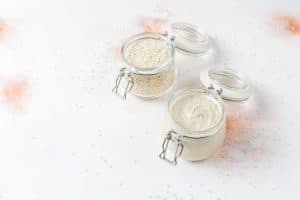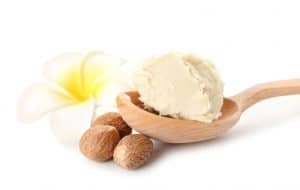Best Toasted Sesame Oil Substitute
Important Note: When you buy through our links, we may earn a commission. As an Amazon Associate we earn from qualifying purchases. Content, pricing, offers and availability are subject to change at any time - more info.
Substitutes for sesame oil vary according to what kind of taste you’re looking for. In general, though, the most suitable sesame oil substitute has to go to perilla oil, an oil that’s often used in Chinese and Korean dishes.
Perilla oil is such a good alternative that it tastes and smells similar to sesame oil. Of course, not everyone has perilla oil. So if you find yourself in a pinch, any other seed or nut oil will suffice. Even light olive oil serves as an excellent substitute if you need an alternative to unroasted sesame oil and nutty flavoring isn’t important.
To ensure that you use the most suitable substitutes for sesame oil, we compiled this handy list, detailing the various alternatives you can use.
Sesame Oil Types
There are actually a couple of different types of sesame oil. Which one you choose to use really depends on why the recipe calls for sesame oil. You’ll find that toasted sesame oil varies in color from golden to brown and carries a clear nutty flavor.
As such, it’s perfect for seasoning various Asian stir-fried dishes, as well as soups or noodles. Considering the strong nutty flavor, it’s advised that you use this oil sparingly.
Light sesame oil, on the other hand, is made from unroasted sesame seeds. You can usually find this type at health food shops or continental grocery stores.
The taste of light sesame oil is quite mild and has a lighter color. What’s more, its high smoke point and mild flavor make light sesame oil ideal for deep frying and stir frying.
Now that we’ve covered the two types of sesame oil and their primary purposes, let’s explore some of the many substitutes for you to consider.
Best Substitutes
Perilla Oil
At number one is, of course, perilla oil. For those unfamiliar, perilla oil is a type of seed oil that features an earthy, nutty flavor. In fact, it’s very similar to the qualities of sesame oil. And as such, perilla oil works well in emulating toasted sesame oil. It’s also great for frying.
But taste isn’t the only reason you should consider perilla oil, as it has several health benefits, too. A word of warning, though. Perilla oil can cause pulmonary toxicity and anticoagulant effects in some people.
Walnut Oil
Walnut oil has a strong nutty flavor and is a perfect substitute for uncooked dressings and sauces that usually require toasted sesame oil. Additionally, walnut oil works really well as a seasoning or condiment in Asian dishes.
Olive Oil
Although the composition of olive oil differs from sesame oil, the former is a fine alternative to use in place of sesame oil. This is due to the fact that both are considered healthy fats. If you need to get a strong taste from your oil of choice, extra virgin olive oil works even better than toasted sesame oil.
And while you can’t do anything about the lack of nutty flavor, in cases where you need oil for cooking purposes, lighter olive oil can be used as a substitute for light sesame oil.
Avocado Oil
This is another good oil substitute where flavor is key. Although there is no nutty flavor of sesame oil, you will still get the flavor of creamy avocado. Unfortunately, avocado oil is not available in general grocery stores. But when you are able to purchase avocado oil, it is best to remember its versatility, especially the oil’s ability to withstand high temperatures.
Canola Oil
Canola oil is another neutral oil that makes a good substitute for light and toasted sesame oil. You won’t find a strong flavor in canola oil, either. And you can use it for deep frying, regular frying, baking, and any other situations where you don’t have to rely on the oil for flavoring.
Tahini
Tahini is sometimes called sesame seed paste. It’s a popular ingredient in the Middle East and works well as a replacement for sesame oil. Tahini features a slight nutty flavor and also has a somewhat creamy texture. This makes it ideal for spreading on raw food or adding to recipes.
If you need the fluidity of the texture to match that of standard oils, you may simply dilute it with some other kind of neutral oil. Doing so will also help you retain Tahini’s nutty flavor.
Roasted Sesame Seeds
Without any oil, just roast the sesame seeds in a non-stick pan until they are fragrant and brown. Then sprinkle a teaspoon on your cooking until you are satisfied with the taste.
Although this is the closest flavor pairing, it is a good choice if flavor is your main concern, but the fact that it lacks oil makes it a bad adhesive.
Homemade Sesame Seed Oil
If you desperately need sesame oil and are not satisfied with any alternatives, you can always make your own. Simply follow a ratio of ¼ cup of roasted sesame seeds to 1 cup of neutral oil (rapeseed [canola] oil or vegetable oil).
In a pan, mix the oil and seeds, then cook the pan over medium heat until you notice the seeds turning brown. Just remember not to let the seeds burn.
Once you see that they are starting to turn brown, take them off of the heat source right away. Then cool, mix, and let the oil stand for a couple of hours. Finally, strain them. If you want to use this oil for frying or marinating, then a DIY oil like this is a good choice.
Learn More
We hope you enjoyed our guide to the best toasted sesame oil substitutes. This is just one of many other articles we have detailing the most suitable alternatives for a wide variety of foods and ingredients.
We also discuss restaurants and bring you the information you need to ensure that you order vegan food when dining out. So head on over to our food substitutes page for all of the latest updates, or our info page for a wealth of vegan articles covering a wide range of topics.
























